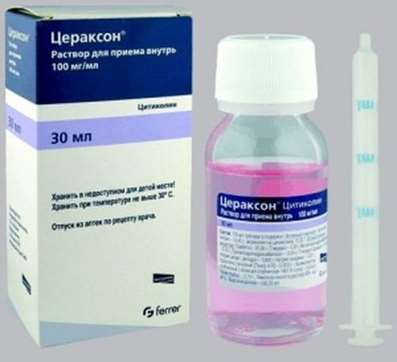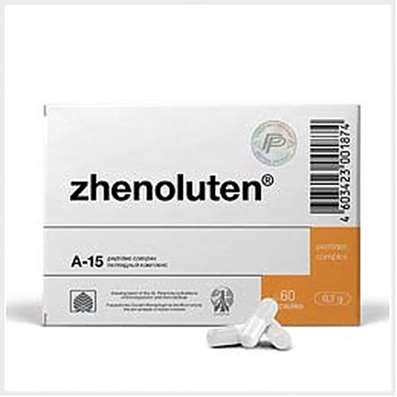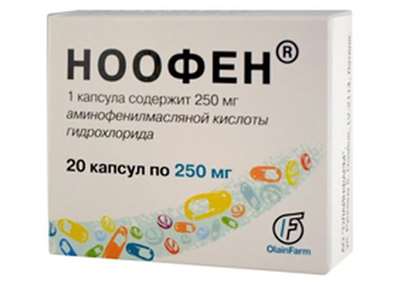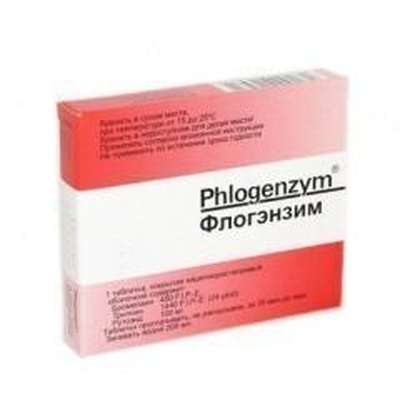Instruction for use: Avonex
I want this, give me price
Dosage form: Lyophilizate for the preparation of a solution for intramuscular administration; Solution for intramuscular injection
Active substance: Interferonum beta-1a
ATX
L03AB07 Interferon beta-1a
Pharmacological groups:
Antiviral drugs (excluding HIV)
Interferons
The nosological classification (ICD-10)
G35 Multiple Sclerosis: Disseminated Sclerosis; Multiple sclerosis; Recurrent multiple sclerosis; Secondary-progressive multiple sclerosis; Exacerbation of multiple sclerosis; Mixed forms of multiple sclerosis
Composition and release form
Lyophilizate for the preparation of solution for intramuscular injection 1 f.
Interferon beta-1a 30 μg
Auxiliary substances: human serum albumin - 15.0 mg; Sodium phosphate dibasic - 5.7 mg; Sodium phosphate monobasic - 1.2 mg; Sodium Chloride 5.8 mg
Solvent (in a syringe): water for injection - 1.0 ml
In glass bottles with a Bio-Set device (complete with a solvent in a syringe and a needle); In a sealed plastic tray 1 set; In a cardboard bundle 4 trays.
Description of dosage form
Lyophilized mass of white or almost white color.
Characteristic
Interferon beta-1a used in the Avonex® preparation is obtained using recombinant DNA technology on Chinese hamster ovary cells with a built-in human interferon beta gene. It is a glycosylated polypeptide containing 166 amino acids with a molecular weight of 22500. The amino acid sequence corresponds to natural human interferon beta.
Pharmachologic effect
Mode of action - antiviral, immunomodulating, antiproliferative.
Pharmacodynamics
Interferons are natural proteins produced by eukaryotic cells in response to a viral infection and the effects of other biological factors. Interferons are cytokines, which are the mediators of the antiviral, antiproliferative and immunomodulating systems of the body. Beta-interferon is synthesized by various types of cells, including fibroblasts and macrophages. Natural beta-interferon and Avonex® (interferon beta-1a) exist in glycosylated form and have a single complex hydrocarbon fragment bound to the N atom. The glycosylation of proteins affects their stability, activity, biodistribution and half-life. Biological properties of Avonex® are determined by the ability of interferon beta-1a to bind to specific receptors on the surface of cells of the human body and trigger a complex cascade of intercellular interactions leading to interferon-mediated expression of numerous gene products and markers such as the main histocompatibility complex of class I, the protein Mx, 2 '/ 5'-oligoadenylate synthetase, b-2-microglobulin and neopterin. The presence of some of these compounds was found in the serum and blood cell fractions of patients receiving Avonex®. After the im injection of 1 dose of the drug, the content of these compounds in the serum remained elevated for 4-7 days. It is not known whether the mechanism of action of the Avonex® pre-treatment is related to the treatment of multiple sclerosis with the initiation of biological interactions described above. The pathophysiology of multiple sclerosis has not been studied enough. The effect of the drug in the treatment of multiple sclerosis was evaluated in a strictly controlled study conducted on patients with a relapsing form of multiple sclerosis. It was shown that the total number of patients who had a progression of disability (defined by the Kaplan-Mayer table) by the end of the second year of the study was 35% for placebo and 22% for Avonex®. In order to compare the efficacy of different doses of the drug, a double-blind random-access study was conducted in 802 patients with multiple (multiple) multiple sclerosis with relapses. The study found no statistically significant differences in the use of doses of 30 and 60 μg by clinical parameters and general parameters of MRI. It was also found that the use of Avonex® for 1 g leads to a decrease in the frequency of relapses during the year by 1/3. The effectiveness of the drug in the treatment of multiple sclerosis was shown in a strictly controlled study in the treatment of patients with symptoms of demyelinating disease. In the placebo-treated group, the recurrence rate was 39% and 50%, respectively, for two and three years, whereas in the Avonex® group, the rates were 21% and 35%. The above data show that Avonex® slows the progression of disability and reduces the incidence of relapse.
Pharmacokinetics
The pharmacokinetics of interferon beta-1a has been studied based on measuring the antiviral activity of interferon. After a single IM injection, peak levels of antiviral activity are achieved in plasma for a period of 5 to 15 hours. T1 / 2 is about 10 hours. The bioavailability of the drug is approximately 40%.
IndicationoftheAvonex
Treatment of patients suffering from recurrent multiple sclerosis, characterized by at least two relapses during the previous three-year period in the absence of signs of disease progression between relapses;
Treatment of patients who had a case of demyelination as a result of an active inflammatory process requiring intravenous corticosteroids, with the exclusion of any other diagnosis other than multiple sclerosis.
Contraindications
Known hypersensitivity to natural or recombinant interferon beta, human serum albumin or any other component of the drug;
Period of pregnancy;
Lactation period;
Pronounced depressive state;
The appearance of suicidal thoughts;
Epilepsy, which is not amenable to therapy of drugs;
Age is less than 16 years.
Application in pregnancy and breastfeeding
In connection with the potential risk of developing adverse reactions, the use of Avonex® during pregnancy is contraindicated.
In connection with the potential risk of adverse reactions in an infant, Avonex® is contraindicated in lactation.
Side effects
The most frequent manifestation of the side effect of interferons is the flu-like syndrome. It manifests itself in the form of weakness, fatigue, muscle pain, fever, chills, headache, nausea. These symptoms are usually more pronounced at the beginning of treatment, their frequency decreases as the treatment continues. To alleviate these symptoms, an analgesic antipyretic can be prescribed, which should be taken before the drug is administered, and also after 24 hours after each injection. Before using any other drug during the course of therapy with Avonex®, a doctor's consultation is necessary. If the doctor recommends taking an analgesic-antipyretic, the recommendations should be carefully followed and not exceed the recommended dose.
In any period of treatment, neurologic symptoms similar to exacerbation of multiple sclerosis may occur: episodes of muscle spasms and / or muscle weakness that limit the possibility of voluntary movements. These episodes are temporarily associated with injections and can be repeated with subsequent injections. In some cases, they may be accompanied by influenza-like symptoms. Other, less frequent manifestations include:
From the skin: alopecia, itching, increased sweating, rash, reactions at the injection site (hyperemia, pain, burning sensation, inflammation, abscess), hives, exacerbation of psoriasis.
Allergic reactions: anaphylactic reactions, anaphylactic shock.
On the part of the gastrointestinal tract: loss of appetite, nausea, diarrhea, vomiting, impaired liver function.
From the cardiovascular system: fever, tachycardia, arrhythmia, cardiomyopathy, heart failure, vasodilation.
From the hemopoietic and blood system: in rare cases - thrombocytopenia, lymphocytopenia, neutropenia, leukopenia, pancytopenia, a decrease in hematocrit, a transient increase in urea in the serum, a change in the level of potassium in the blood.
From the genitourinary system: menorrhagia, metrorrhagia.
From the side of the central nervous system: headache, decreased sensitivity, anxiety, dizziness, insomnia, paresthesia, in rare cases epileptopodobnye seizures, depression, suicidal thoughts, confusion, emotional lability, psychosis, migraine.
From the musculoskeletal system: muscle spasms, myalgia, arthralgia, pain in the extremities, neck and back pain, muscle stiffness, transient decrease or increase in muscle tone at the beginning of the course of treatment.
On the part of the respiratory system: rhinorrhea, dyspnoea, dyspnea.
On the part of the endocrine system: hypothyroidism, hyperthyroidism.
From the immune system: hepatitis, incl. Autoimmune, in rare cases with the development of hepatic insufficiency, systemic lupus erythematosus.
General reactions of the body: flu-like symptoms, increased sweating at night, changes in body weight, changes in liver function, chest pain.
Interaction
Special studies on the interaction of Avonex® with other drugs, incl. With corticosteroids or ACTH, have not been performed in humans. However, the experience of clinical trials shows that patients with multiple sclerosis can take Avonex® together with corticosteroids or ACTH during an exacerbation of the disease.
It is known that interferons have the ability to reduce the activity of enzymes associated with liver cytochrome P450. In this regard, caution should be exercised in prescribing Avonex® concomitantly with drugs whose clearance is largely dependent on the cytochrome P450 system, for example antiepileptic drugs and antidepressants.
Dosing and Administration
IM.
The recommended dose of Avonex® is 30 μg once a week. This dose is contained in 1 ml of the dissolved drug in the vial and injected IM. An increase in the dose does not lead to an increase in the therapeutic effect. The duration of the course of therapy is determined individually. After 2 years of treatment, the patient must undergo a clinical examination and on an individual basis the attending physician may recommend continuing the course of therapy.
Avonex® should be administered immediately after reconstitution. Injections of the drug should, if possible, be produced at the same time on the same day of the week. The injection site should be changed every week. It is possible to perform injections to the patients themselves upon permission of the attending physician and after training in the method of IM injections.
Recommendations for preparation for the injection:
1. Dissolution (produced immediately before the administration of the drug):
- Holding the Bio-Set base, turn the cap and remove it. Do not touch the connecting hole;
- Remove the cap from the syringe filled with solvent, without touching the tip. Do not press the piston.
- put the bottle with the Bio-Set vertically on a smooth surface, align with the tip of the syringe. Screw the cannula of the syringe into the Bio-Set clockwise. Follow the direction of movement and holding the syringe behind the base, sharply bring it down so that the tip disappears completely and there is a click;
- slowly pressing the plunger of the syringe, introduce the solvent into the vial;
- leaving the syringe connected to the Bio-Set, gently rotate the vial until the powder is completely dissolved. The drug should completely dissolve within 1 min. Avoid shaking the bottle. This can cause the formation of foam;
- press the plunger of the syringe down to the stop to remove all air in the syringe;
- turn the syringe and bottle vertically 180 ° and slowly pull the piston so that the solution of the drug is in the syringe;
- open the individual packing of the needle, do not remove the cap from the needle;
- holding the filled syringe by the base, detach it from the Bio-Set device by turning counter-clockwise. Do not touch the cannula of the syringe!
- Insert the needle on the filled syringe by turning it clockwise.
Then put the syringe on a flat surface and treat the injection site with a swab dipped in alcohol.
2. Injection:
- by pulling off the protective cap from the needle without rotating it;
- turn the syringe with the needle upward, to slightly knock out the air at its base so that the bubbles go up. Press lightly on the plunger to remove the bubbles so that not more than a small drop of liquid appears on the tip of the needle;
- stick the needle into the muscle and slowly introduce the drug, and then remove the syringe with the needle. If necessary, seal the injection site with a patch.
Warnings: To prepare the solution, use the water for injection contained in the kit. Do not use other solvents. When attaching the syringe to the Bio-Set, do not take any further action until a click is heard. Rapid introduction of a solvent can cause foaming, which makes it difficult to inject the drug into the syringe.
The drug is not suitable for use if the integrity of the vial is violated, and also if the solution of the drug turns out to be cloudy, colored (a slight yellowish coloration is allowed), or floating particles will be visible in it. The drug does not contain preservatives. Each vial is only for single use. The remaining solution should be discarded or destroyed.
Overdose
Due to the route of administration and dosage form, an overdose is unlikely.
Treatment: in case of an overdose, the patient should be hospitalized for medical follow-up and symptomatic therapy.
Special instructions
Before starting treatment, patients should be informed of possible side effects associated with the use of the drug. In view of the possibility of spontaneous abortion due to the development of side effects associated with the use of interferon beta, patients should be advised to avoid conception. Avonex®, like other interferons, should be used with caution in the treatment of patients with depression or depressive disorders. It is known that the use of interferons may cause depression and suicidal thoughts, and in the group of people with multiple sclerosis, the frequency of such phenomena increases. The occurrence of depressive states is possible at any time with Avonex®. If any signs of depression or suicidal thoughts occur, patients should immediately consult a doctor. For such patients, it is necessary to establish close monitoring during treatment and, if necessary, to urgently apply appropriate treatment measures. In some cases, it may be necessary to stop using the drug.
If the patient develops a progressive form of multiple sclerosis, the drug should be discontinued.
Care should be taken when prescribing Avonex® to patients who have previously suffered seizures. If epileptic seizures occur in patients who have not previously suffered from epilepsy, the etiology of seizures should be established and an appropriate anticonvulsant therapy should be prescribed before resuming the use of Avonex®. Caution should be exercised in the appointment, as well as careful monitoring of patients suffering from severe renal and hepatic impairment, as well as with oppression of bone marrow hematopoiesis.
With the use of interferon beta, the appearance of signs of a violation of liver function, such as an increase in the level of liver enzymes in the serum, the development of hepatitis, including. Autoimmune, hepatic insufficiency. Patients should be closely monitored for signs of hepatic impairment, especially if interferon is used in conjunction with other hepatotoxic drugs.
When using Avonex®, patients with cardiovascular disease should be closely monitored: angina, myocardial infarction, decompensated heart failure, and arrhythmia. Manifestations of influenza-like syndrome caused by the use of the drug may have a stressful effect on such patients. When using interferons, there are deviations in laboratory indicators, therefore, in addition to routine laboratory tests, it is recommended to count blood cells (including platelets) during the treatment, to determine the leukocyte count and to biochemical analysis of blood (including liver enzymes) in patients with multiple sclerosis. Those patients who have signs of bone marrow depression may need a more thorough blood test.
When using Avonex ® in the serum, interferon-neutralizing antibodies can appear, which reduce the activity of interferon beta-1a, and consequently, the clinical effectiveness of the drug. Available data suggest that after 12 months of treatment, approximately 8% of patients in the serum appear antibodies to interferon beta-1a.
Influence on the ability to drive a car or other machinery. Some undesirable effects of the drug on the central nervous system may affect the ability of patients to drive a car or complex mechanisms.
Special studies on the interaction of Avonex® with other drugs, incl. With corticosteroids or ACTH, have not been performed in humans. However, the experience of clinical trials shows that patients with multiple sclerosis can take Avonex® together with corticosteroids or ACTH during an exacerbation of the disease.
It is known that interferons have the ability to reduce the activity of enzymes associated with liver cytochrome P450. In this regard, caution should be exercised when administering Avonex® concomitantly with drugs whose clearance is largely dependent on the cytochrome P450 system (eg antiepileptic drugs and antidepressants).
Storage conditions of the drug Avonex
In the dark place at a temperature of no higher than 25 ° C (do not freeze). Transport in the original packaging, protected from light, at a temperature of no higher than 25 ° C (do not freeze).
Keep out of the reach of children.
Shelf life of the drug Avonex
2 years.
Do not use after the expiry date printed on the package.

 Cart
Cart





